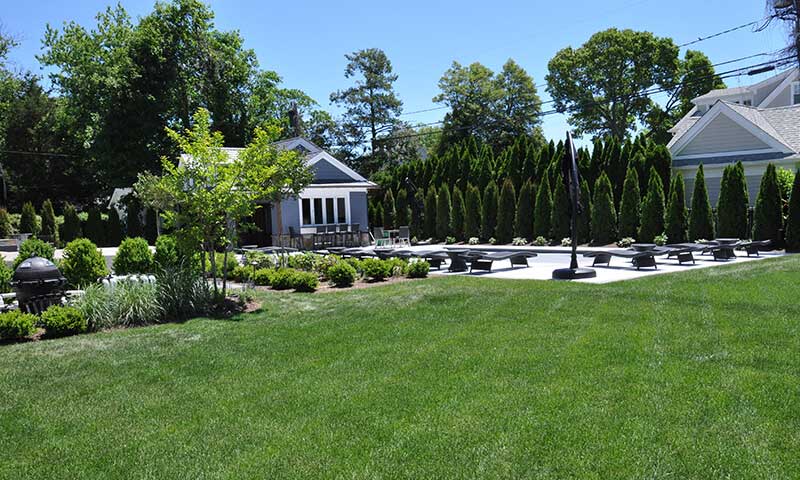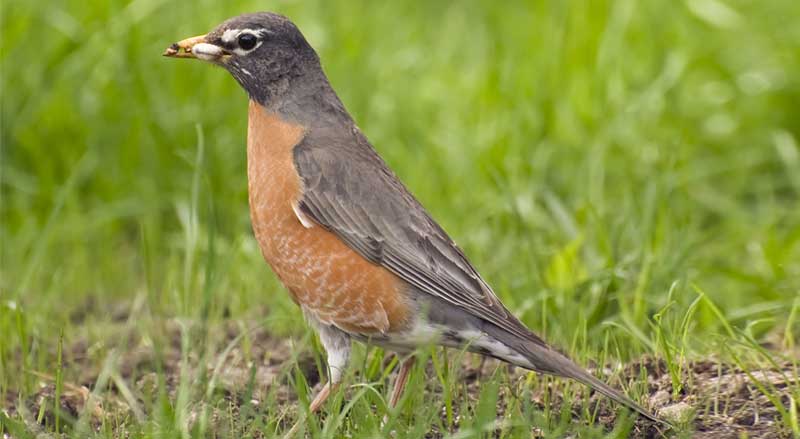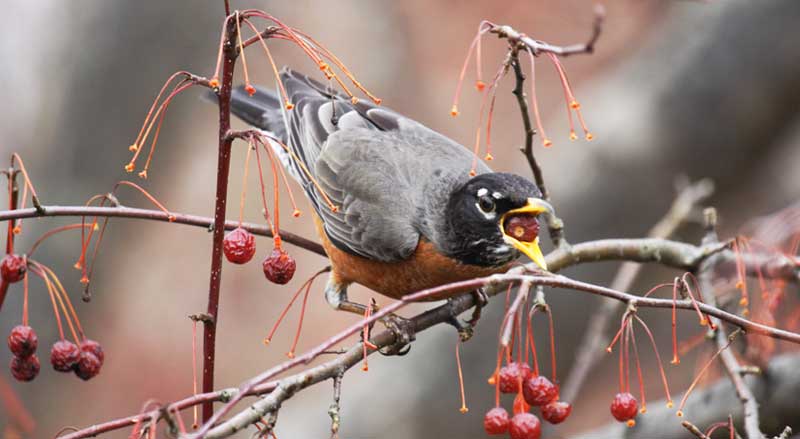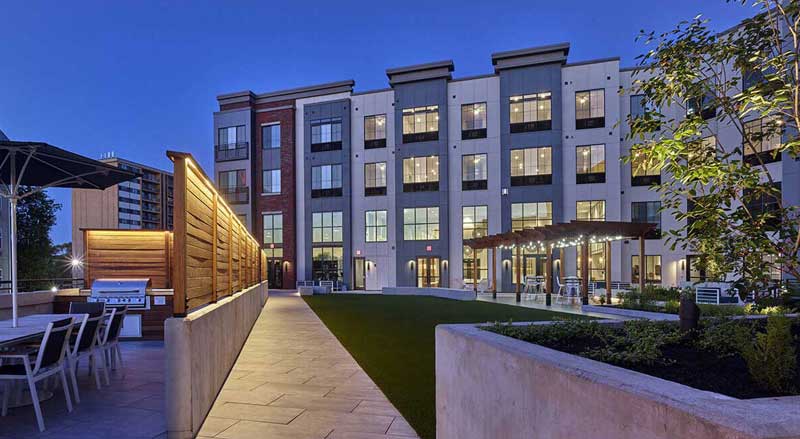Do you remember when you first bought your new home? You had a lot of decisions to make. Should you buy a larger house on a busier road or a smaller house on a less travelled one?
There wasn’t a right or wrong answer. It was all about knowing the facts, weighing the options, and deciding what you wanted. The same goes for deciding on sod vs. seed. Make your landscape decision easier with our sod vs. seed comparison chart.
But first . . .
All About Sod
What Is Sod?
Sod is pre-grown strips of grass that are installed over prepared soil.
Mats of soil hold the grass and roots together.
Why People Love Sod
Sod allows you to create a breathtaking and mature lawn immediately, without waiting for seeds to germinate.
Whether you’re planning a lavish outdoor event or putting your house on the market, an instant lawn area will add beauty, curb appeal and value.
And for those who simply want to run barefoot over a lush green lawn, sod offers almost instant lawn gratification!
Other Benefits of Sod
Sod will control weeds and stop soil erosion immediately. If your lawn gets a lot of foot traffic, is a haven for weeds, or experiences running water, try sod instead of seeding.
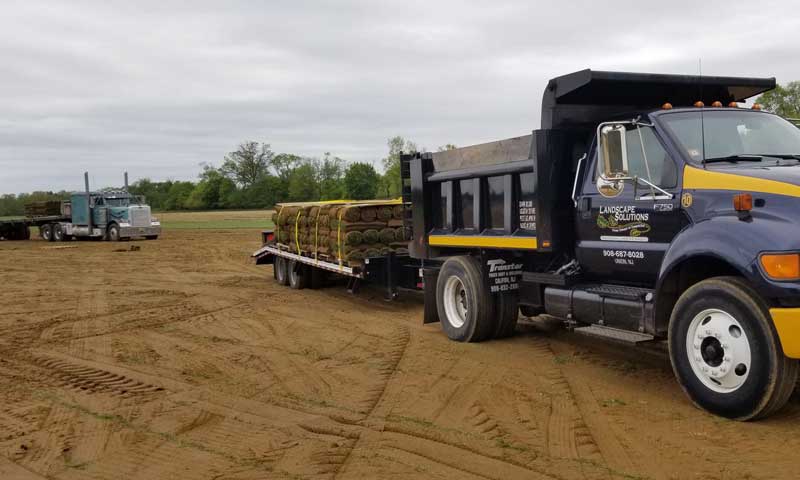
What to Know Before Buying Sod
Sod comes in different grades and varieties, which accounts for the wide variation in pricing. Read all about different types of sod.
The sod must thrive in your climate, light conditions, and soil condition.
Inferior sod may contain weeds. Find a trusted sod supplier who sells superior sod.
Don’t have sod arrive early just so you can get a specific type. You should plant sod the same day it’s delivered. It cannot lie uninstalled around the property; sod is perishable.
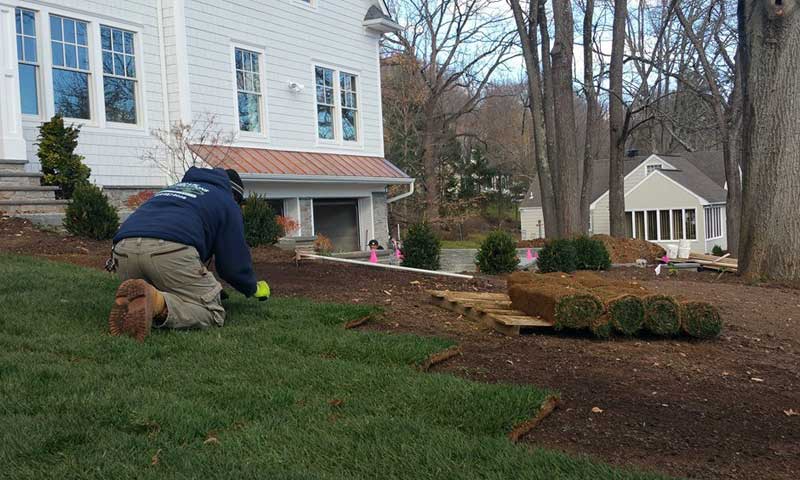
Sod Installation
Install sod over well-prepared bare soil.
To prepare the land for sod:
- Test the soil
- Clear the property of rocks, roots, debris, and old lawn
- Kill weeds
- Grade the soil
- Add a layer of topsoil over the existing soil
- Add any necessary nutrients to encourage lawn growth
- Pack and smooth the soil
- Water the soil immediately before sod is installed
Sod is an investment in your home. If it’s improperly installed and cared for, it will dry out. A dying lawn and an angry checkbook will be all you have to show for your efforts.
Installation is a demanding process. Most people like to rely on the services of a landscape professional to avoid exhaustion and costly mistakes.
In New Jersey, Landscape Solutions can successfully install sod at any time during the landscaping season.
Sod Maintenance
Once roots have established, a sodded lawn needs minimal care.
Water it daily for the first two weeks. Mowing can begin after 2-3 weeks.
It takes a few weeks for the roots to become well established. Until then, resist the temptation to walk on the lawn.

A Word About the Cost of Sod
The financial factors to consider when installing sod include:
- The size of the lawn
- The quality of the sod
- Installation costs
While sodding a lawn is a more expensive option than seeding, many people feel the benefits far outweigh the added expense. Check our comparison chart at the bottom of this post.
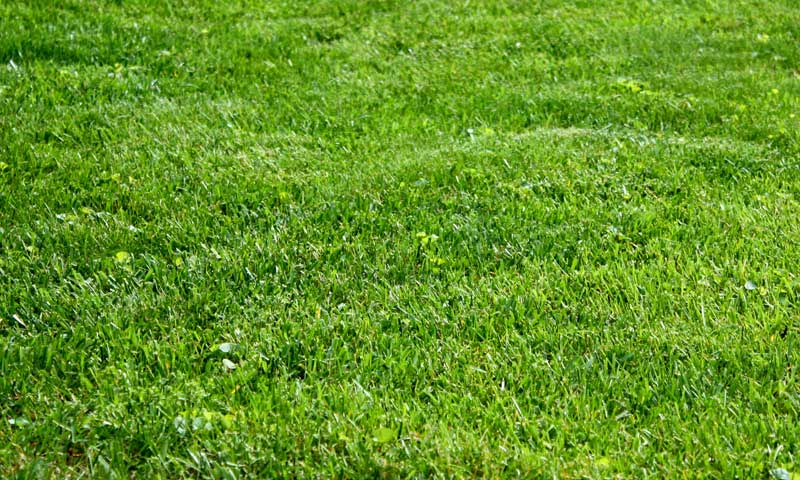
All About Seeding
Seeds Create Great Lawns, Slowly
Seeding is a long process that, in the beginning, leaves a lawn looking bare and unattractive.
Yet many homeowners find the seeding process satisfying to watch and nurture.
Seeding Shortcomings
Seeded lawns can’t prevent soil erosion until fully established. If your lawn will be exposed to high winds, heavy rain, or draining water, prepare to watch your hard work and investment go down the drain.
If the seeded area is prone to weeds, the new grass seed won’t get the nutrients and water it needs. It will starve.
In both cases, sod offers much better results.
Benefits of Seed
Since seeds weren’t originally planted somewhere else, your new lawn won’t have to adjust to new environmental conditions.
Sod can develop transplant failure when moved from the original growing area to the new lawn.
Seeding is also a manageable do-it-yourself project, unlike sod installation.
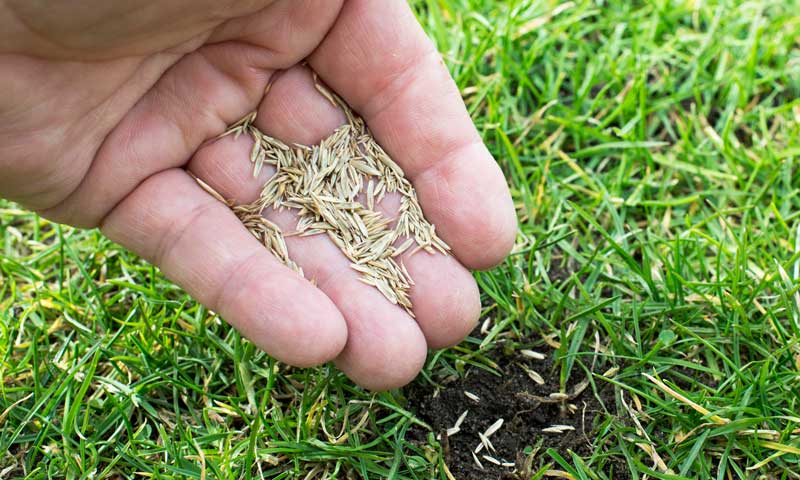
What to Know Before Buying Seed
Seeds come in many varieties.
Like sod, grass seed must work with your property’s climate, light and soil conditions.
Kentucky Bluegrasses are popular for sunny and partly shady New Jersey lawns. These cool-season grasses recuperate well and once sprouted, quickly fill in bare spots.
Plant this grass in the spring or fall—but not in the heat of summer. Moderate daytime temperatures combined with a cooler evening help the seeds germinate quickly.
The optimal time to seed your New Jersey lawn is between late August and early November.
Preparing Your Lawn for Seed
Prepare the soil for seed by:
- Making sure the soil’s pH level is best for grass germination and growth
- Adding proper herbicides and nutrients to help seeds germinate and discourage weed growth
- Clearing the area of large roots and rocks to 6 inches in depth
Soil testing can be expensive, but it’s important. Proper soil pH can be the difference between a sparse or thriving lawn.
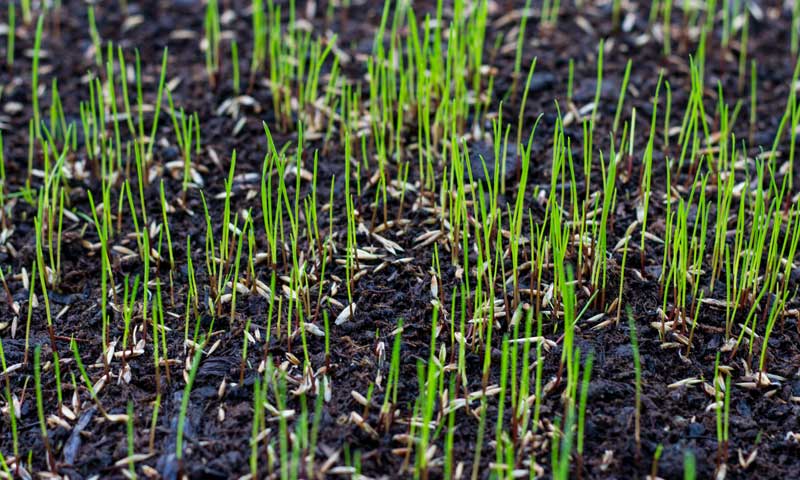
Seeding Your Lawn
When using a Kentucky Bluegrass seed, try to plant three pounds of seed for every 1,000 square feet of lawn.
Kentucky Bluegrass seeds will sprout in about 14 days. This is longer than other seeds. But after sprouting, it will fill a lawn faster than many other grasses.
In New Jersey, a Bluegrass lawn can take up to six weeks to grow.
Kentucky Bluegrass is popular because it:
- Grows well in full sun and light shade
- Recovers quickly
- Is tolerant to cold
- Survives New Jersey’s winters
- Is disease resistant
Seeded Lawn Maintenance
Newly planted seed needs may need watering several times a day, every day.
Follow instructions for your particular grass. Here are some tips for watering lawns more efficiently.
As grass grows, you can water deeper and less frequently.
Wait at least two months to mow the lawn to ensure all the seeds have germinated.
Cost of Seeding Your Yard
Seeding a yard can be costly. Not only do you want to purchase quality seed, but soil testing and preparation can be expensive.
However, seeding a lawn costs less than sod installation. With sod, you are paying someone else to grow your grass.
Comparison Chart for Sod vs. Seeding
Again, there’s no right or wrong answer. It’s all about what works best for you, your needs, and your budget.

If you are installing a new lawn, contact us at Landscape Solutions for expert sod and seeding lawn care. We will make your dream lawn a reality.

